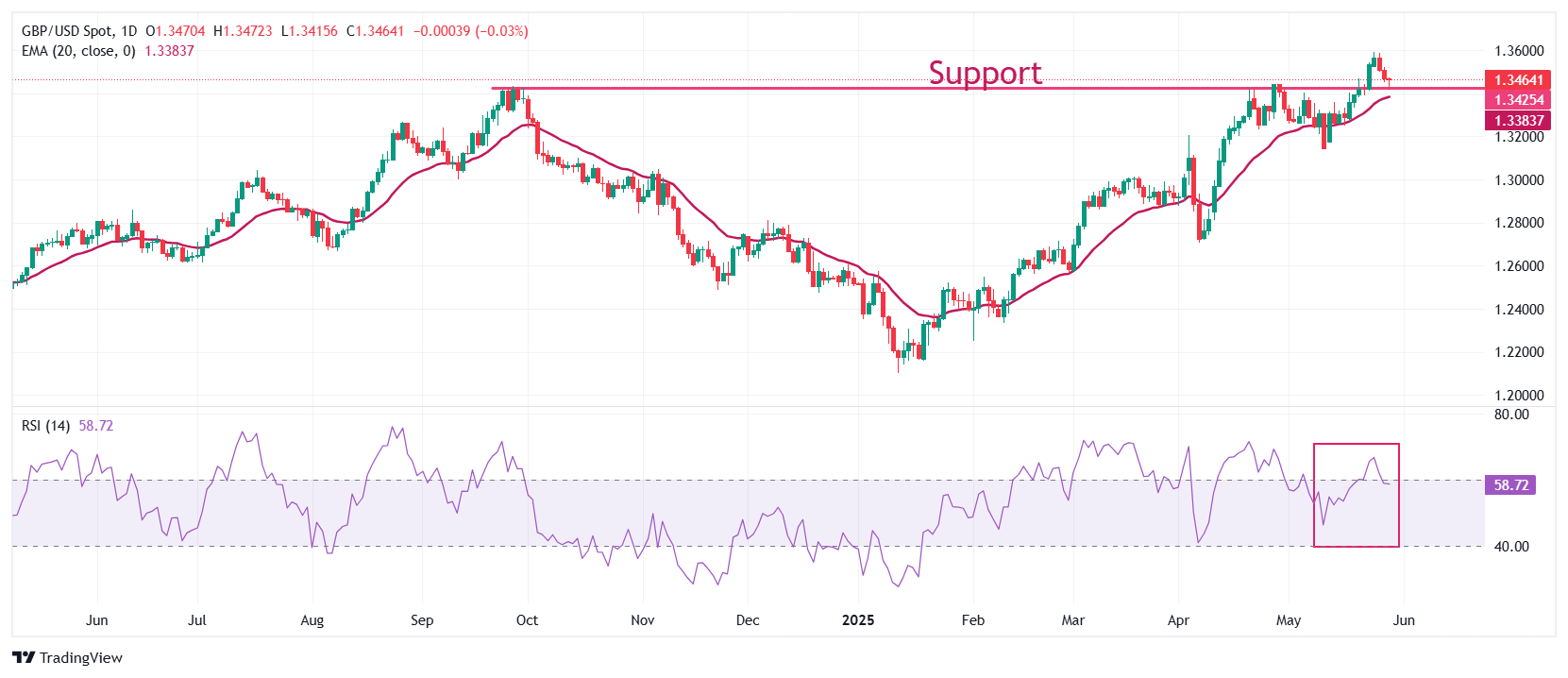Pound Sterling gains as US court dismisses Trump’s tariff policy

- The Pound Sterling recovers to 1.3500 against the US Dollar as investors reassess the impact of the US court’s decision against tariffs.
- The US court ruled out Trump’s tariff policy, citing it as a violation of constitutional limits.
- The IMF has slightly raised its forecast for UK GDP growth for the year to 1.2%
The Pound Sterling (GBP) recovers from early losses against the US Dollar (USD) and reclaims the key level of 1.3500 during North American trading hours on Thursday. The GBP/USD pair rebounds as the US Dollar surrenders a chunk of its initial gains, as the Sterling bounces back against the US Dollar on Thursday after attracting bids near the horizontal support plotted from the September 26 high of 1.3434 and rises to near 1.3500. The outlook of the pair remains firm as the 20-day Exponential Moving Average (EMA) slopes higher around 1.3385.
The 14-day Relative Strength Index (RSI) struggles to hold above 60.00. The bullish momentum would come to an end if the RSI slides into the 40.00-60.00 range.
On the upside, the 13 January 2022 high of 1.3750 will be a key hurdle for the pair. Looking down, the 20-day EMA will act as a major support area.
Tariffs FAQs
Tariffs are customs duties levied on certain merchandise imports or a category of products. Tariffs are designed to help local producers and manufacturers be more competitive in the market by providing a price advantage over similar goods that can be imported. Tariffs are widely used as tools of protectionism, along with trade barriers and import quotas.
Although tariffs and taxes both generate government revenue to fund public goods and services, they have several distinctions. Tariffs are prepaid at the port of entry, while taxes are paid at the time of purchase. Taxes are imposed on individual taxpayers and businesses, while tariffs are paid by importers.
There are two schools of thought among economists regarding the usage of tariffs. While some argue that tariffs are necessary to protect domestic industries and address trade imbalances, others see them as a harmful tool that could potentially drive prices higher over the long term and lead to a damaging trade war by encouraging tit-for-tat tariffs.
During the run-up to the presidential election in November 2024, Donald Trump made it clear that he intends to use tariffs to support the US economy and American producers. In 2024, Mexico, China and Canada accounted for 42% of total US imports. In this period, Mexico stood out as the top exporter with $466.6 billion, according to the US Census Bureau. Hence, Trump wants to focus on these three nations when imposing tariffs. He also plans to use the revenue generated through tariffs to lower personal income taxes.
